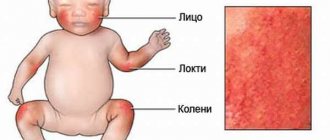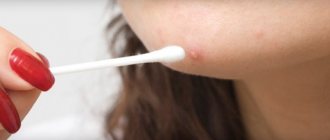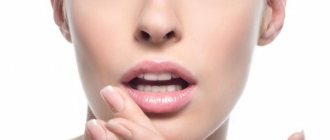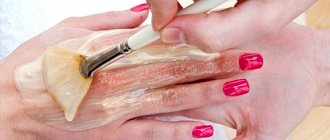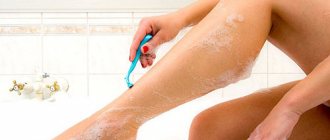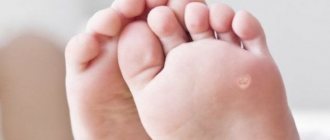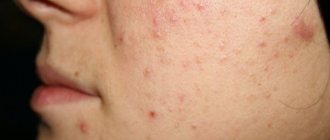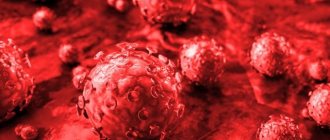Causes and mechanisms
Thermoregulation by evaporation of sweat in young children is not yet fully developed, because the level of its production at this stage is considered low. However, there are situations when a similar physiological mechanism works even more actively. Excessive sweating in a child can be due to a number of reasons:
- Overheating (excessive wrapping, hot air in the room).
- Excess weight (paratrophy in infants and obesity in older age).
- Feverish conditions.
- Post-infectious asthenia.
- Lymphatic-hypoplastic diathesis.
- Rickets.
Among somatic diseases, it is also worth paying attention to hyperfunction of the thyroid gland (thyrotoxicosis), impaired carbohydrate metabolism (diabetes mellitus), and vegetative-vascular dystonia. Excessive sweating in children can be hereditary, which can be confirmed by taking a family history. It is also worth considering the option of such conditions as excessive physical and emotional activity or wearing synthetic clothing. But to accurately determine the cause, you should consult a doctor.
Excessive sweating occurs due to a number of factors: both physiological and pathological. Why is this observed in a particular case, the doctor will tell you.
When to see a doctor
When the above recommendations do not help or sweating is accompanied by anxiety and fever, you should immediately consult a doctor.
You should not delay your visit to the pediatrician if:
- sweat has a sour smell, thick and sticky consistency;
- when sweat dries, traces of salt remain on the baby’s body;
- wet areas turn red and look inflamed;
- sweating too much.
The doctor will conduct a full examination and find out the cause of the pathological phenomenon.
Symptoms
Hyperhidrosis in children is not difficult to identify - due to excessive sweat production, the skin will be excessively moist. This is especially observed in natural folds, where fluid accumulates in greater quantities. Due to prolonged exposure to sweat, characteristic changes often occur on the skin:
- Redness.
- Rash in the form of small papules or transparent blisters.
- Sometimes itching sensation.
This condition is called miliaria and can be of several types. The mild form is not accompanied by subjective discomfort and inflammation. But with longer and more severe disorders, prickly heat looks like multiple elements on a red and swollen base, which hurt, and when scratched, they can also become infected. This brings discomfort to the child, causes moodiness and deterioration of the general condition.
If we are talking about those reasons when excessive sweating in a child is caused by some kind of systemic disease, then the clinical picture will be determined by the underlying pathology. Then the following symptoms should be excluded:
- Fever, malaise, loss of appetite (for any illness with fever).
- Paleness, pastiness, enlarged tonsils and lymph nodes, decreased nervous excitability (with a lymphatic-hypoplastic constitution).
- Tearfulness, anxiety, bald patches on the back of the head, muscle hypotonia, deformities of the chest, spine and legs (with rickets).
- Enlarged thyroid gland, bulging eyes (exophthalmos), increased heart rate, irritability, weight loss (with hyperthyroidism).
- Thirst, dry mouth, increased amount of urine, increased appetite (with diabetes).
- Lability of blood pressure, headaches and dizziness, discomfort in the precordial area, increased fatigue, feeling of lack of air (with vegetative-vascular dystonia).
There are quite a lot of signs that accompany pathology with increased sweating in children, these are just a few of them. The specific clinical picture is determined by the individual characteristics of the body, the severity of the underlying disease and related problems.
Symptoms are determined by both increased sweating and signs of the underlying pathological process that provoked it.
Scientific definition
Hyperhidrosis is the medical term used to describe excessive sweating. This does not just mean severe sweating. A child in this condition may sweat so much that he has to change his underwear several times a day, which creates many problems for the baby. This phenomenon is largely due to the peculiarities of the anatomical and physiological development of minors.
The fact is that at the age of five, children are not distinguished by their powerful physique and size; the surface area of their skin is several times less than that of an adult. Despite this, the number of sweat glands in babies is almost the same as that of their parents! It is not surprising that children visually sweat much more, although their bodies produce a relatively normal amount of sweat.
Additional diagnostics
Why children sweat a lot can be determined based on a comprehensive diagnosis. Along with a clinical examination, this may require additional methods:
- General blood tests (leukocyte count, red blood cells, hemoglobin, ESR) and urine (phosphates, calcium).
- Blood biochemistry (calcium and phosphorus, glucose, hormonal spectrum, alkaline phosphatase).
- Ultrasound of internal organs.
- X-ray (chest, bones, spine), etc.
The basis for making a diagnosis will be not only the results of the studies performed, but also consultations with related specialists, who in some cases have to be involved in the process (pediatrician, infectious disease specialist).
Traditional methods for eliminating sweating
There is absolutely no need to immediately suppress heavy sweating in a five-year-old child with some kind of medication. It is likely that the result will be much more harm than good. First, use the simplest method - taking salt baths . This is easy to do - take a teaspoon of salt for every liter of water. The duration of the bath is about half an hour. And further. There is no need to make the water hot. It should be warm, about 37-42 degrees Celsius. If desired, decoctions of mint, sage and oak bark can be added to the water. The pleasant aroma will surely please the child and calm him down. Taking such baths about an hour before going to bed is especially beneficial.
gives a good effect . It has a rather peculiar, but still quite pleasant aroma, and therefore children are unlikely to protest against the processing. To make the medicine, dilute vinegar with water in a 1:1 ratio. The resulting mixture should be wiped two to three times a day on the sweatiest areas of the skin. As a rule, sweating should stabilize after about a week and a half. Please note that after applying vinegar there is no need to rinse it off. The product should dry directly on the skin. This remedy is especially effective during sleep. The bite is also good because it does not leave any marks on the bed linen.
Treatment
Excessive sweating in a child, which has arisen due to a number of external reasons, requires their elimination and optimization in caring for the baby. Therefore, general recommendations to help get rid of the problem include:
- Maintaining the room temperature at 20–22 degrees and humidity within 40–60%.
- Free swaddling of babies, wearing clothes made from natural fabrics.
- Frequent change of bed linen.
- A nutritious diet including vitamin D and calcium.
- Frequent walks in the fresh air.
- Sufficient level of physical activity.
In case of excessive sweating, it is also recommended to take baths with the addition of sea salt, potassium permanganate or herbal decoctions (willow or oak bark, string). Areas where irritation appears are sprinkled with talcum powder and lubricated with Bepanten cream or zinc ointment. If a microbial process (pyoderma) occurs, it is recommended to use drugs with an antibacterial effect (for example, Baneocin).
It will not be possible to cure hyperhidrosis, which is caused by systemic disorders in the body, with symptomatic means. For a lasting and pronounced effect, it is necessary to carry out specific correction of the underlying disease.
Your doctor will tell you how to treat excessive sweating in children. The complex of therapy may include general measures, symptomatic and special means.
Parents often encounter the problem of hyperhidrosis or excessive sweating in their children. In most cases, its origin is related to external conditions, but there are also more serious factors that should never be forgotten.
Treatment of excessive sweating in a child
It is strongly not recommended to treat hyperhidrosis of the palms and feet in children at home. Therefore, when the first signs of the disease appear, you should seek help from a doctor who will help you choose the most effective treatment program.
Medicines
Today, the most effective medicine for treating a child from hyperhidrosis is Kuvpoza, which is approved for use from 3 to 16 years. This drug was initially used as a remedy for increased salivation in children with cerebral palsy, but over time its ability to significantly reduce sweating and thus effectively treat even severe hyperhidrosis in children was noted.
Important addition: Treatment of mycelium threads on nails: causes of pathogenic fungi
Dysport injections
This treatment method helps with extremely severe forms of hyperhidrosis and, according to modern doctors, is safe for the child. Dysport is an analogue of Botox, that is, a drug with a similar composition, but with a lower cost and many positive reviews.
Treatment of foot hyperhidrosis with Dysport involves injecting this medication under the child's skin, which helps block the transmission of nerve impulses to the sweat and sebaceous glands. As a result of this, the little patient completely stops sweating in problem areas. The effect of the drug lasts for a period of 6 months to 1 year.
How is distal hyperhidrosis diagnosed?
Diagnosis of hyperhidrosis first of all begins with a detailed interview with the patient, after which the doctor prescribes a number of studies:
- Analysis of urine;
- blood test – biochemical, clinical, blood sugar level;
- if the presence of a malignant tumor is suspected, tumor markers are prescribed;
- X-ray examinations;
- electrocardiography;
- Ultrasound.
If, as a result of a complete examination of the body, it is determined that hyperhidrosis is not one of the symptoms of any pathology, the doctor begins to search for the causes of the development of excessive moisture in the palms and feet. Most often, the cause of the development of primary distal hyperhidrosis is hidden in disturbances in the activity of the sympathetic nervous system.
People suffering from distal hyperhidrosis sometimes take strong sedatives and even tranquilizers, because they constantly have to deal with problems that are not limited to just wet feet and palms. Problems arise when communicating with partners - wet hands can create an unpleasant impression of a person after a handshake. And excessive sweating of the feet is accompanied by an unpleasant odor, which also forces a person to avoid close communication with people, sometimes even to the detriment of his career.
Quite often, as a result of an examination, the doctor discovers fungal diseases in problem areas. With constantly wet feet, abrasions appear on the skin, which over time are affected by pathogens that cause the development of fungal infections. In this case, the patient will need additional consultation with a dermatologist.
